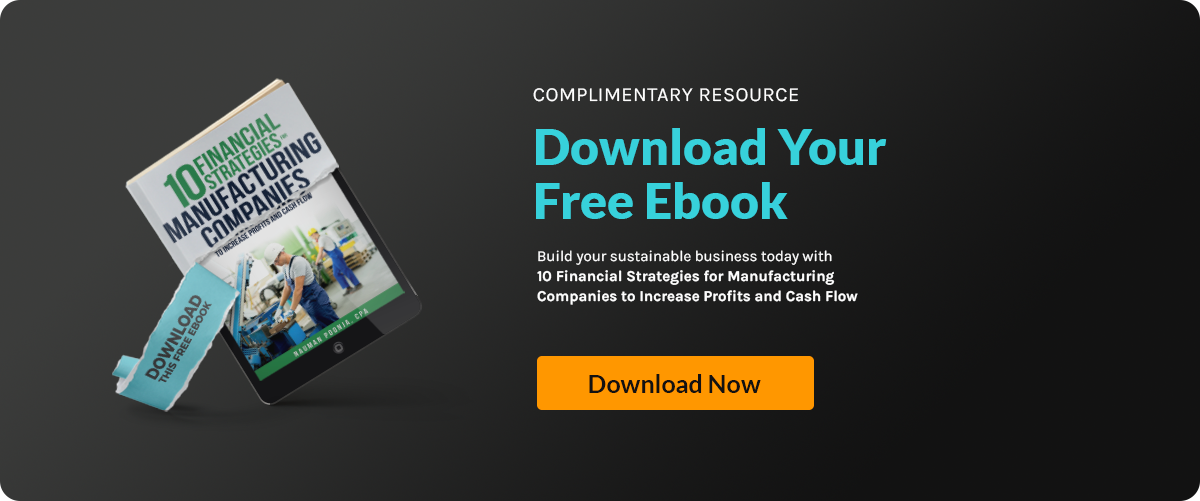For manufacturing businesses, keeping an eye on cash flow is critical. Two terms that directly...
Expense Reports for Manufacturing Businesses: What to Track and Why?

What Is an Expense Report?
An expense report is a document that tracks the money your business spends on operations. In manufacturing, this can include everything from raw materials to fuel, maintenance, travel, and software.
For small businesses, especially in manufacturing, accurate expense reports help:
- Manage cash flow
- Identify cost-saving opportunities
- Stay compliant with tax rules
- Improve financial forecasting and decision-making
Why Expense Reports Matter in Manufacturing
In a manufacturing setting, costs can pile up quickly. A missed receipt or miscategorized transaction might not seem like a big deal, but over time, these errors add up.
Solid expense reporting helps you:
- Understand your cost of goods sold (COGS)
- Control spending across departments
- Prepare for audits or reviews
- Support your financial reporting with clean, accurate data
Key Categories to Track in Manufacturing Expense Reports
Here are the most important categories you should be tracking:
1. Raw Materials and Supplies
These are the items used to make your product. This includes direct materials (like steel, wood, or plastic) and indirect materials (like glue, thread, or lubricants).
Make sure to track what you buy and how much you use. This helps you calculate your Cost of Goods Sold (COGS) and spot waste or shortages.
2. Labor Costs
forget to include:
-
Overtime
-
Temporary or contract workers
-
Supervisors or managers in the plant
Learn how to calculate labor and overhead cost so you can manage workforce spending better.
3. Utilities and Facility Costs
Factories use a lot of energy and water. Your report should include costs like:
-
Electricity for running machines
-
Heating and cooling
-
Water and sewer
-
Waste disposal
These expenses can vary by season, so track them monthly for better cash flow visibility.
4. Maintenance and Repairs
When machines break down, production slows or stops. That’s expensive. Keep track of:
-
Regular maintenance (oil changes, tune-ups)
-
Emergency repairs
-
Replacement parts
See how production downtime affects your costs and how to plan for it.
5. Travel and Transportation
If your team travels for business or you deliver goods yourself, these costs add up fast. Be sure to track:
-
Gas and mileage
-
Vehicle maintenance
-
Flights, hotels, and meals
-
Freight and shipping
These are often missed in reports, but they matter for accurate forecasting.
6. Professional Services
You may hire outside help for:
- Legal advice
- Bookkeeping and taxes
- Fractional CFO services
These experts help you stay compliant and make smart financial decisions.
7. Software and Subscriptions
Many manufacturers use digital tools to manage work. These tools often have monthly or yearly fees. Be sure to include:
- ERP systems
- Inventory and order tracking software
- Design tools (like CAD)
- Payroll or accounting software
If you're choosing a new system, read this guide on ERP system selection for manufacturing.
8. Insurance and Permits
Running a manufacturing business comes with risks. That’s why you need the right insurance and legal permits. Track costs like:
-
General liability insurance
-
Equipment and property insurance
-
Workers' compensation
-
Safety or zoning permits
Learn more about manufacturing insurance types and why they’re essential to protect your business.
Best Practices for Creating and Managing Expense Reports
1. Use Digital Tools
Use cloud-based accounting software or ERP tools to digitize and categorize expenses. Avoid manual spreadsheets when possible.
2. Set Clear Guidelines
Create a company policy that defines what counts as a business expense, and who can approve it.
3. Require Receipts and Documentation
Always attach receipts, invoices, or notes to every report for audit readiness.
4. Track Expenses Regularly
Don't wait until month-end. Log expenses weekly (or daily if possible) to catch problems early.
5. Match Expenses to Projects or Departments
This helps in identifying which part of your business is consuming the most resources. Use labor cost strategies to stay efficient.
Common Mistakes to Avoid
- Not categorizing properly: Mixing fixed vs. variable costs can distort financial reporting.
- Forgetting mileage or travel costs: These often get missed.
- Missing recurring subscriptions: Review your monthly charges for tools you no longer use.
- Not backing up reports: Always store copies in a secure cloud platform.
How Expense Reports Support Your Bottom Line
Expense reports help you:
- Improve budgeting and forecasting
- Spot cash leaks or overspending
- Strengthen profit strategies
- Stay ready for tax season and audits
For manufacturers, knowing your expenses is just as important as knowing your production numbers.
Final Thoughts
Expense reports might seem like a back-office chore, but they play a frontline role in financial health. If you're a manufacturing business looking to scale, stay lean, or attract investors, organized and detailed expense tracking is non-negotiable.







